 |
 |
 |
| |
Infection-related Non-AIDS-defining Cancer Risk in HIV-infected and -uninfected Persons: Increased Rates in HIV+ vs HIV-negatives in Kaiser
|
| |
| |
Reported by Jules Levin
CROI 2009 Feb 8-12 Montreal
Michael Silverberg*1, W Leyden1, C Chao2, L Xu2, B Tang2, M Horberg1, D Klein3, W Towner4, and D Abrams5
1Kaiser Permanente, Oakland, CA, US; 2Kaiser Permanente, Pasadena, CA, US; 3Kaiser Permanente, Hayward Med Ctr, CA, US; 4Kaiser Permanente, Los Angeles Med Ctr, US; and 5San Francisco Gen Hosp, Univ of California, San Francisco, US
Background: Population-based surveillance for non-AIDS-defining cancers (NADC) in HIV+ persons in the ART era is warranted given the aging HIV+ population, and the high prevalence of cancer risk factors including tobacco use and other co-infections.
Methods: We identified adult HIV+ and 10:1 age-, sex-, and year-matched HIV- members in Kaiser Permanente California, a large integrated health system caring for >6 million Californians. Incident non-AIDS-defining cancers were identified from SEER-based Kaiser Permanente cancer registries, and grouped as infection-related (e.g., anal, head and neck, liver, Hodgkin's lymphoma, and others) or infection-unrelated. Cohort members were followed from first enrollment after January 1, 1996 until the earliest non-AIDS-defining cancer diagnosis, last Kaiser Permanente enrollment, or December 31, 2006. Age- and sex-adjusted rate ratios (RR) were estimated for HIV+ vs HIV- persons. Changes in the RR over time were evaluated for years 1996 to 1999, 2000 to 2003, and 2004 to 2006.
Results: We identified 18,890 HIV+ persons contributing 81,831 person-years and 189,804 HIV- persons contributing 971,675 person-years.
In HIV+ persons, 482 non-AIDS-defining cancers were identified; 220 infection-related and 269 infection-unrelated (7 had both). In HIV- persons, 3065 non-AIDS-defining cancers were identified, 398 infection-related, and 2698 infection-unrelated (31 had both).
Rates (per 10,000 person-years) for infection-related non-AIDS-defining cancers were 29.7 for HIV+ and 4.4 for HIV- (RR = 6.8; p <0.001); the RR did not change over time: 6.4 (p <0.001) in 1996 to 1999, 7.6 (p <0.001) in 2000 to 2003, and 6.2 (p <0.001) in 2004 to 2006 (p trend = 0.52).
Rates for infection-unrelated non-AIDS-defining cancers were 36.4 for HIV+ and 30.6 for HIV- (RR 1.2; p = 0.002); the RR was significant only for the most recent period: 1.2 (p = 0.26) in 1996 to 1999, 1.2 (p = 0.12) in 2000 to 2003, and 1.3 (p = 0.02) in 2004 to 2006 (p trend = 0.85).
Significant results for infection-related non-AIDS-defining cancers were anal (RR 81.4; p <0.001), Hodgkin's lymphoma (RR 17.4; p <0.001), head and neck (RR 2.1; p <0.001), and gynecologic (RR 2.9; p = 0.001). Significant results for infection-unrelated non-AIDS-defining cancers were kidney (RR 1.8; p = 0.045), lung (RR 1.7; p = 0.004), melanoma (RR 1.7; p = 0.002), and prostate (RR 0.7; p = 0.007).
Conclusions: HIV+ persons have an elevated risk of non-AIDS-defining cancers, particularly infection-related which comprised almost half of all the non-AIDS-defining cancers in this population. The increased risk of non-AIDS-defining cancers in HIV+ persons has not changed much during the ART era.

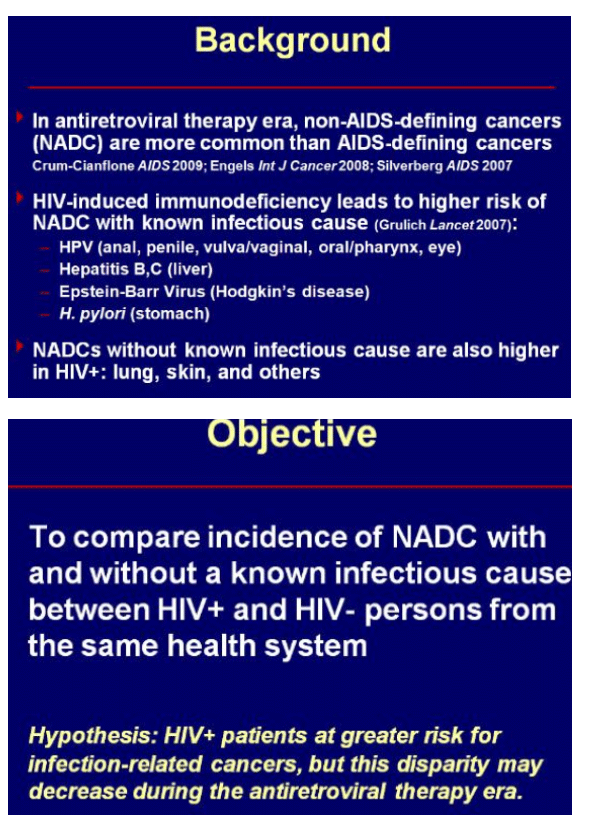
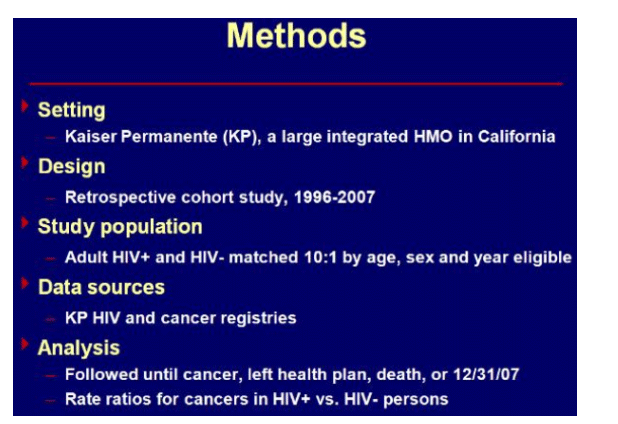
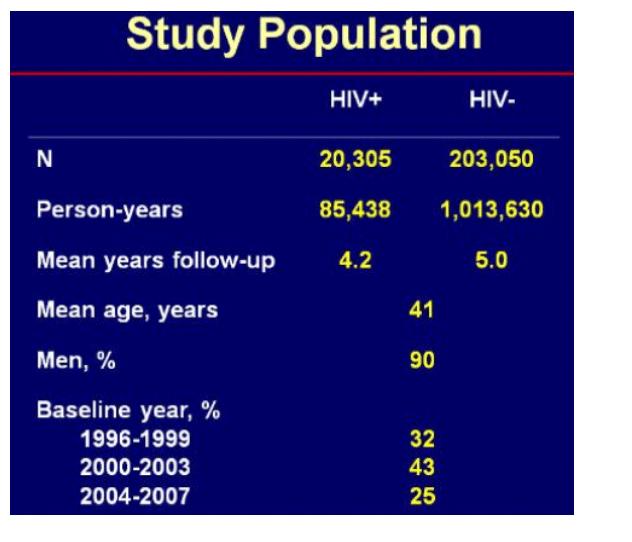
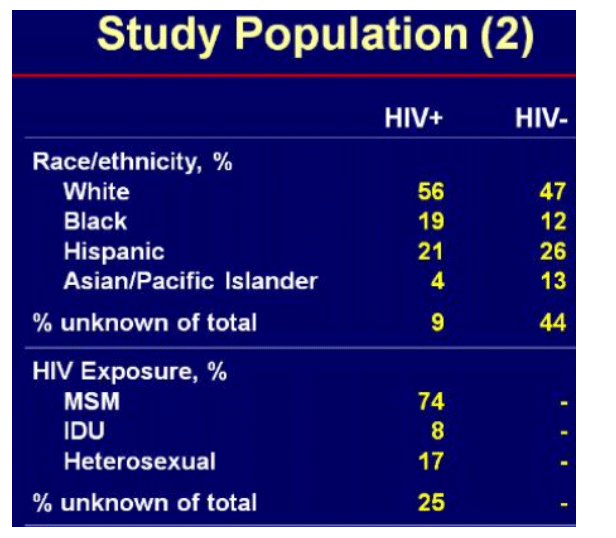
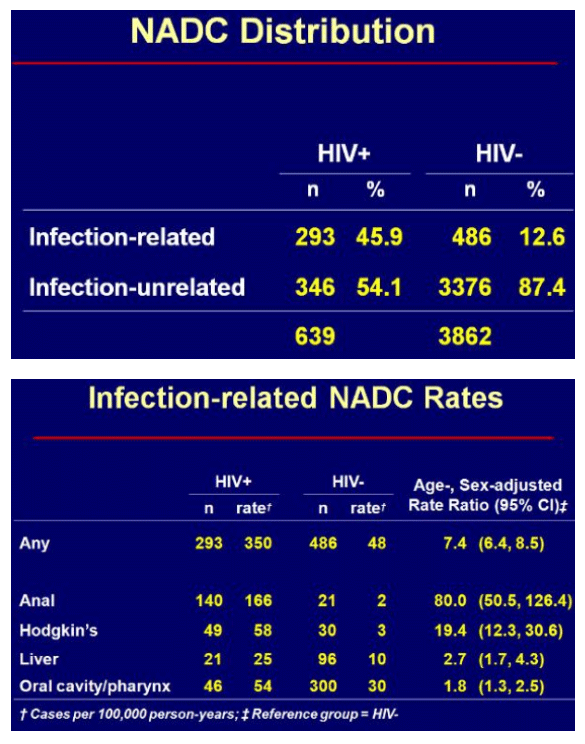
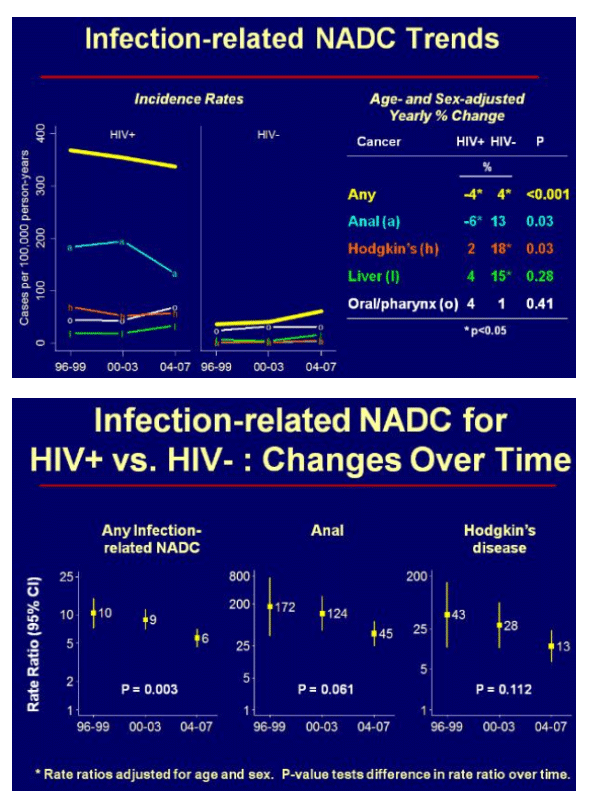

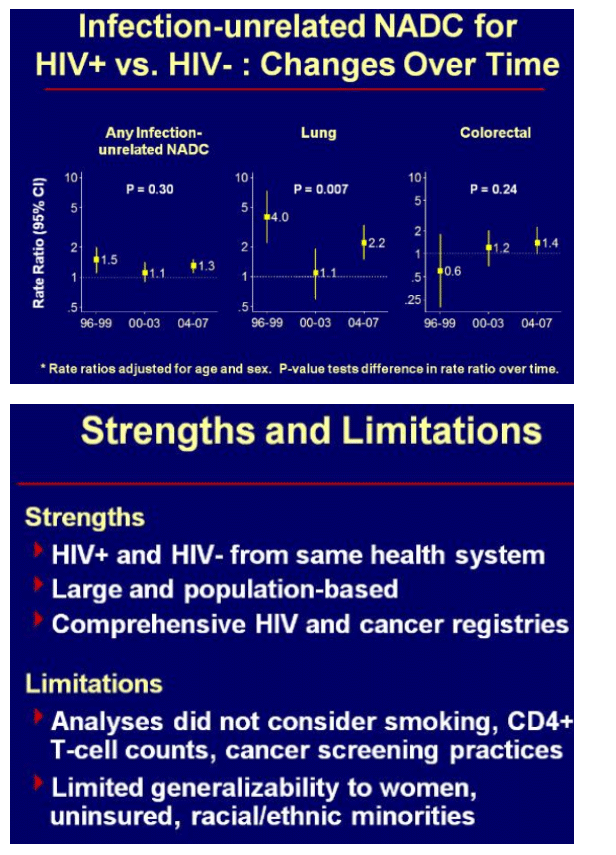
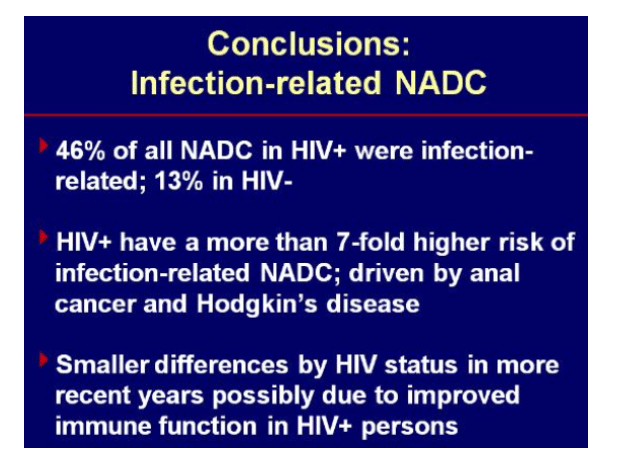
|
| |
|
 |
 |
|
|